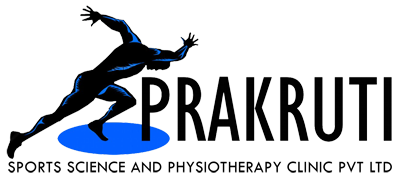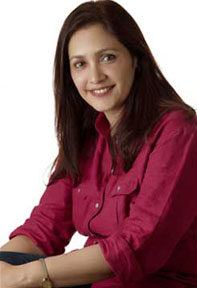“Doc, will my child be the next Sachin?” is the question many parents are apparently asking (a news article I recently read in a daily). This article was about a “Gene-testing lab” that has newly been set up in Mumbai, and the children being tested are apparently as young as 3. Of course, the test being non-invasive, simple and probably physically harmless, parents are unhesitatingly choosing to test their children in the hope that they can identify a sport that suits their child.
As a child I was keenly interested in Table Tennis, and played it myself, representing my school. With limited media coverage of sporting events, we still got some television coverage of international Table Tennis and I used to wonder what made the Chinese win at this game more than anyone else. In the last few years there has also been an on-going debate on why Jamaicans are champion sprinters and what makes Kenyans win marathons. Is sporting success dependant on genetics, socio-economic status, geographical region, race, colour, psychological make-up, specialised training, or the elusive “x-factor”? Can sporting success be predicted and skills honed from early years?
Sportsmen, as all of us, are a product of cellular and psycho-social genesis combined with a huge helping of providence. To take the example of Jamaican sprinters: scientists, doctors and coaches have come up with various factors for their success. Training on grass, the ACTN-3 RR gene, the toughness of mind and body, the national passion for track and field events: especially sprinting, the history of slavery and resultant pent-up anger, the ‘Trelawny Yam’ (a vegetable grown in Jamaica), and even as ridiculous as the athletes having “an extra-long ring finger”!! But though some or all these factors might be common to most Jamaicans, not all achieve the success that Bolt and Asafa did.
Testing and research shows that the impact of genes on identifying and achieving sporting excellence is exaggerated. Most elite athletes have chosen their sport after dabbling in other sports as children. E.g. Usain Bolt played football and cricket, Lance Armstrong began as a swimmer, soccer player Diego Forlan was a promising tennis player, etc. Physical, emotional, social development of children is enhanced by participation in various sports, and in fact participation in team sports teaches vital social skills for the future. Children who specialize in a single sport, especially those that are played individually, are deprived of several opportunities for all round development, time for free play, and time to make lasting friendships. Further, the psychological stresses of competition, gruelling practise sessions and competition schedules, overuse of certain joints and muscles are all potentially harmful. Is it not a fact that most talented world class athletes have risen to the top barely 4-5 years after they entered the sport? Sporting genius does not need several years of perfecting, and in fact children training for a single sport face the danger of early “burn-out” or game-threatening injuries before they shine.
The particular “sports gene” that is being tested is only a small part of the athletic make up. It can at the most give an indication of whether the child will be good at endurance sports or those that require speed. But genetics determine many other factors like mental make-up, liking and preferences, height and body type, talent and flair, etc. Some of these are changing throughout childhood, and in fact may be apparent only after adolescence. If a child is confined to a single sport due to the mistaken belief of the parent that it is his* “calling”, the child may never find out what his real interests are!! Different sports require different body types, and the body type of the child may not be obvious till full growth is complete!! What a pity it would be if it did not match the requirement of the sport after all!!
Success itself might mean different things to different people and cannot be defined. No milestones, no material items or objects can be the measure of success as long as you need more. The markers for success can be different to a parent than to a child, and one cannot decide for the other what his goals should be. In simple terms, success is whatever makes the individual happy. What right does a parent have then to choose a sporting career for the young child on the basis of a genetic test? In fact this test will potentially take away the child’s right to explore other sports, arts, hobbies and careers in his pursuit of happiness.
To conclude, the making of a champion is extremely complex and probably requires hundreds of factors to interact with each other, but if a champion is in the making, they all suddenly come together at the right time like pieces of a kaleidoscope making a beautiful picture. Wouldn’t it be gratifying to wait patiently and support your child with love and understanding while the pieces fall together on their own?
Your child may not be another Sachin (in fact there will probably never be another Sachin), but… the world might still reverberate with the name of YOUR child the way it does with HIS!!
(*Note: The pronoun “his” has been used to denote a child, for the sake of convenience, and should be treated as a substitute for a girl as well as boy child)








Hi,
Lovely article and fully agree with the comments made. I would like to add as follows-
The making of a Champion does not happen overnight. It takes a lot of effort, pain, determination to reach the top. Most important it also takes a lot of sacrafices to be made.
No socialising with your peers due to early morning training days, no late nights out, no night shows, etc are a few that can really daunt a young teenager and can tempt them to give up what they could be really good at.
Most importantly what also makes Champions, is the effort put in by Coaches/trainers in conditioning the mind of the young athlete and inculcating the “Killer instinct” or “Do or die” spirit. Wthout this important part, no amount of training will help.
I am shocked to read that parents would resort to ‘gene testing”. It would be a sad day for Indian sports if we were to resort to such vain methods.
Once again lovely article and …keep writing.
woot, thankyou! I finally came to a site where the webmaster knows what they’re talking about. Do you know how many results are in Google when I search.. too many! It’s so annoying having to go from page after page after page, wasting my day away with thousands of people just copying eachother’s articles… bah. Anyway, thankyou very much for the info anyway, much appreciated.
Harshada,
Each piece in the blog is superbly thought through, immensely insightful, with such mature and thought provoking views, all written eloquently and comprehensibly. Congratulations, your writing needs a bigger platform.
Cheers
Kunal.
Do you people have a facebook fan page? I searched for one on facebook or twitter but could not discover one, I’d really like to become a fan!